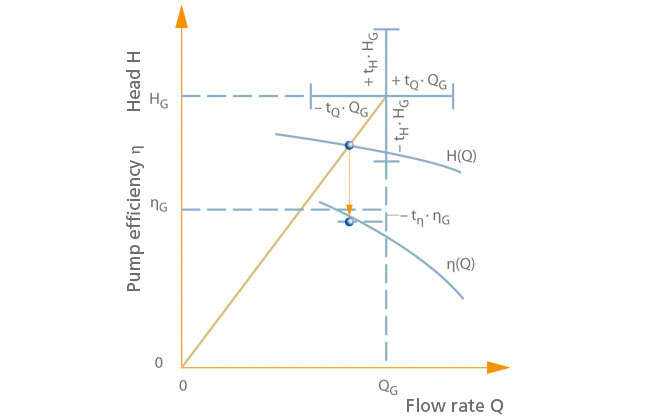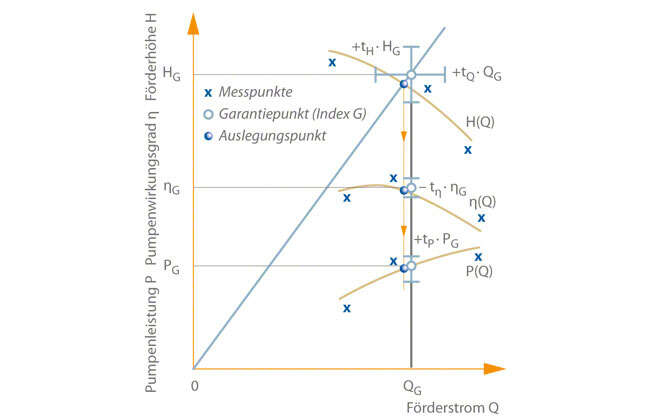Tolerance
In hydraulic acceptance tests, tolerances of measurements have to be met as evidence of compliance with the guaranteed values. Acceptance test code. Acceptance test code DIN EN ISO 9906 specifies the tolerance factors for the individual operating parameters. These tolerance factors for the flow rate (±τQ), head (±τH) and pump efficiency (±τη) must be applied to the guaranteed point.
The head and flow rate guarantee is fulfilled if the H/Q curve determined from the measurements intersects or at least touches the vertical and horizontal bar of the tolerance cross.
See Fig. 1 Tolerance
See Fig. 1 Tolerance

Fig. 1 Tolerance: Evidence of compliance with guaranteed values of the flow rate, head and efficiency
The efficiency is derived from the point where the measured H/Q curve intersects the straight line running through the agreed operating point QG, HG and the origin of the H/Q axis as well as from the point where a vertical is intersected by the η(Q) curve calculated from the measurements. The guarantee condition for efficiency is deemed to be within the tolerance limits if the value of this quantity is greater than or at least equal to the value for ηG∙(1-τη) at the intersection point.
In the current version of DIN EN ISO 9906, 6 classes are defined for assessing a pump measurement, resulting in different tolerances.
See Fig. 2 Tolerance
See Fig. 2 Tolerance

Fig. 2 Tolerance: Accuracy classes for acceptance testing of pumps with appropriate tolerance ranges
In accordance with this extended classification system, diagrams are available to illustrate examples of the conditions for fulfilling the guarantee.
See Fig. 3 Tolerance
See Fig. 3 Tolerance

Fig. 3 Tolerance: Permissible tolerances for classes 1B, 2 and 3
